How you can use decking to work wonders with water
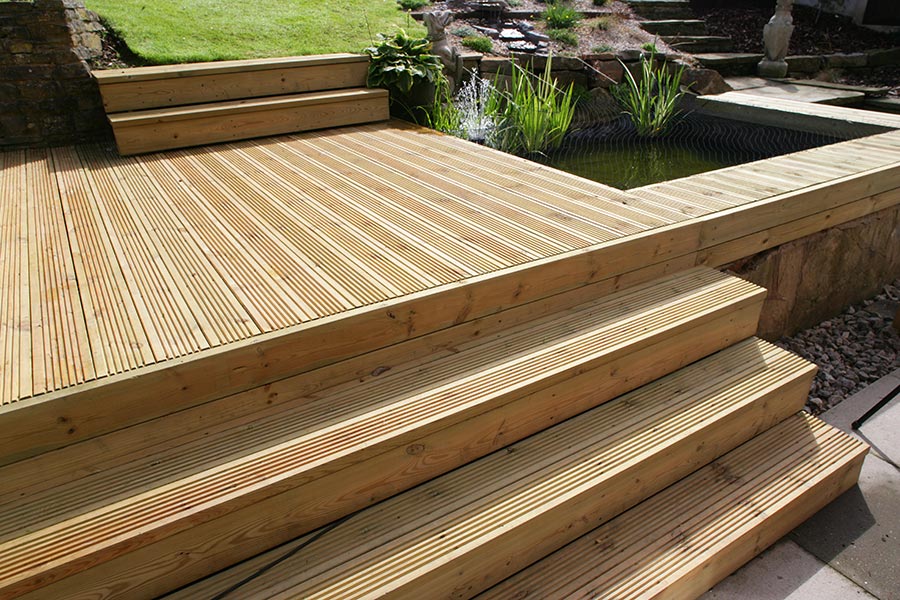
The warmer months are a great time to add some water to your garden. Building a pond can bring a sense of calm and attract new wildlife, while a hot tub invariably makes your garden the place everyone wants to be.
Stylistically and functionally, decking is an ideal material to use around a pond or a hot tub in your garden. Not only does decking come with wonderfully evocative maritime connotations, reminiscent of sun-kissed jetties and walks along the pier, but when it is used as the surround of a well-designed pond or hot tub it offers plenty of practical benefits.
In the past, stone paving or some form of hard standing area has been the most common approach to creating surrounds for ponds and hot tubs, but decking is an easier material to work with and it can improve the safety of the area around the water.
Decking around your pond
Using decking to edge a pond brings a soft, natural look that is often more suitable for walking on than hard stone. Decking also allows you to create a handy void space that can hide away pumps, cables and clarifiers, and you can run your decking over the top of your pond to create the feel of having a little jetty in your garden.
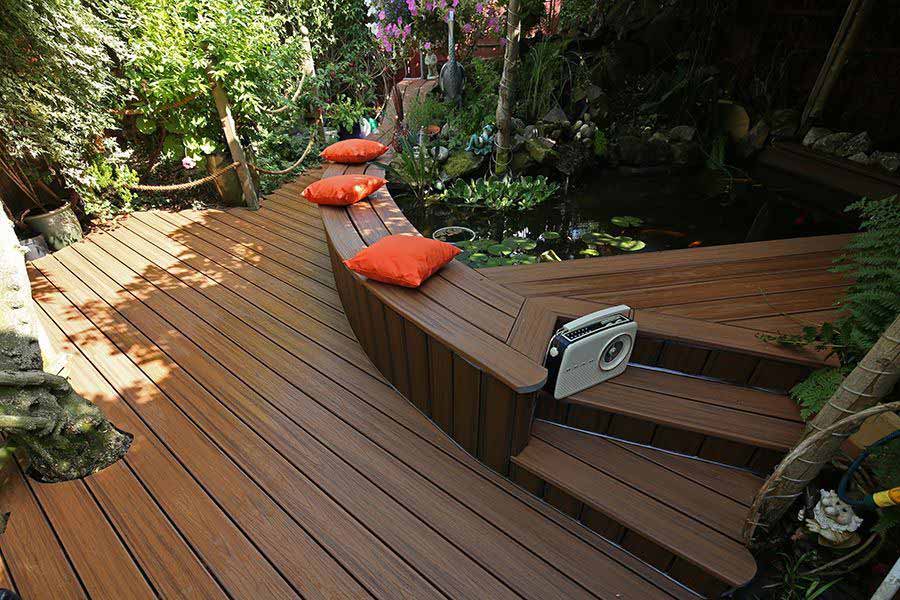
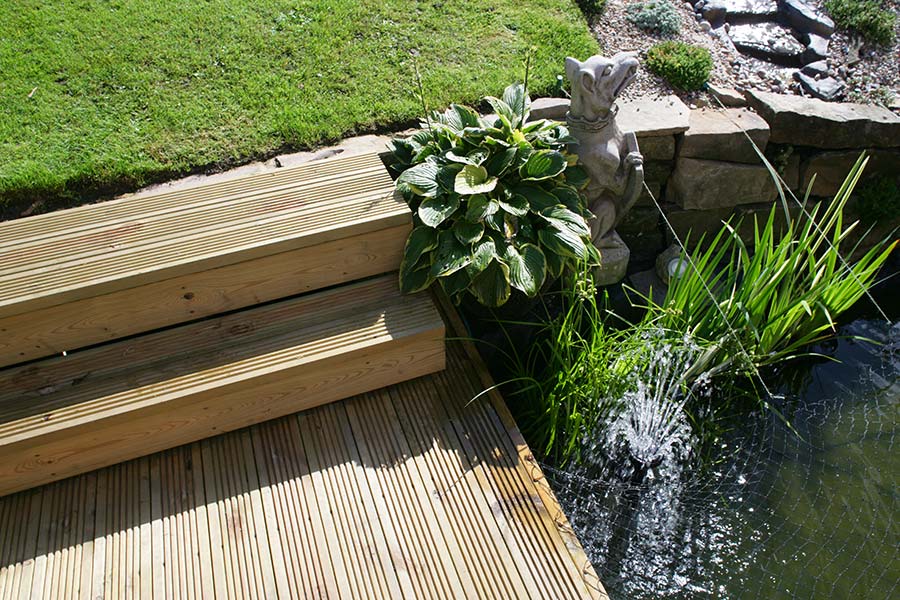
The process of installing a rectangular pond using deck boards and pond liner is relatively straightforward. Decking can be used for the retaining boards around the sides of your pond, and for the framing around the top edge. Once you have laid your pond liner, lengths of decking can be placed over the four edges and drilled into the edging frame.
Creating larger areas of decking around your pond requires the creation of substantial foundations, using well compacted hardcore for stability. Given that many ponds are surrounded by plants, your decking might be prone to becoming slippery, so it is wise to plan your design with this in mind. For example, alternating deckboard patterns can be used to reduce the likelihood of slips and composite decking is easier to keep clean and free of mold and mildew than hardwood or softwood decking, which means it is less likely to be slippery.
An ideal spa setting
There are few better ways to enhance a garden with a luxurious space for relaxing outdoors and entertaining than installing a hot tub. Whether your hot tub sits entirely above ground or in a hole in the ground, decking is an ideal choice for landscaping the surrounding area.
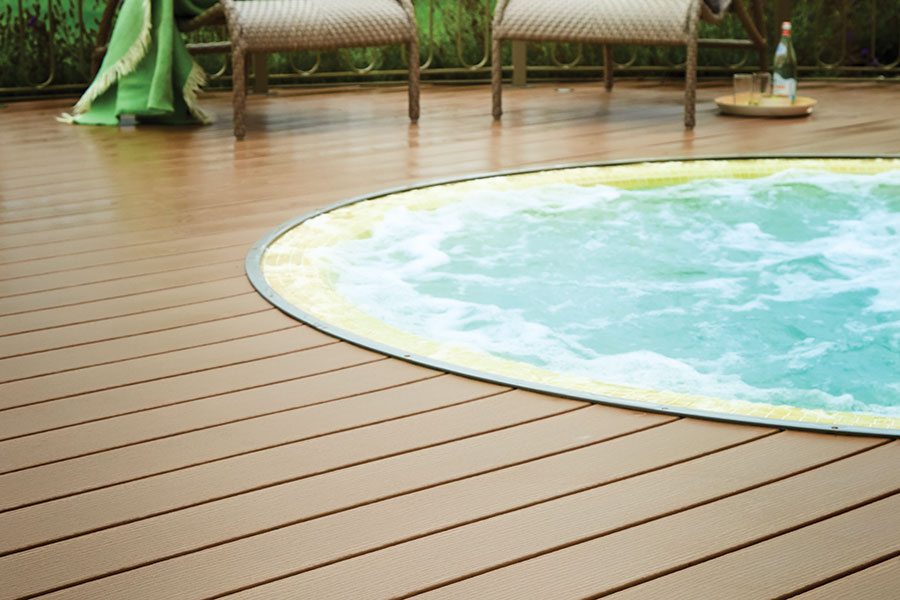
Sunken hot tubs look great, seamlessly blending in to the landscape of your garden, but recessing your tub too low could make getting in and out of it difficult. Even if you are agile enough for access not to be a problem, you should still leave a rise of around 16 to 18 inches above the level of your deck so that you can properly cover your tub when it is not in use.
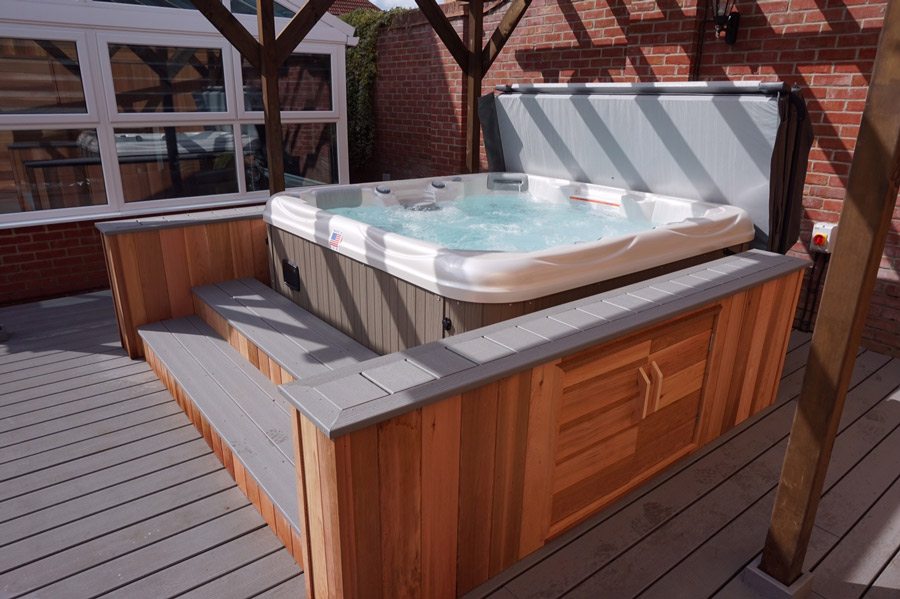
Above-ground hot tubs tend to be a more affordable option, and decking can be used to blend your tub into its surroundings and to create easy access. You can use deckboards to build a bench around your tub and steps leading up to it with the same wood or composite materials used elsewhere in your garden to achieve a seamless effect.
Substance over style
Your garden design might feature a hot tub that is close to your house or at the far reaches of your outdoor space. Either way, ensure the structure of your deck is stable enough to support the weight of a completely filled hot tub without shifting at all before construction commences.
When choosing the materials for a deck in any area that is likely to get wet frequently, durability is a key consideration. Durable hardwoods have been proven to stand up to the rigors of heavy outdoor use and can last for many years, but for lower maintenance and durability it is hard to ignore the outstanding range of composite decking materials that can help you create safe, attractive surroundings for your new pond or hot tub.







